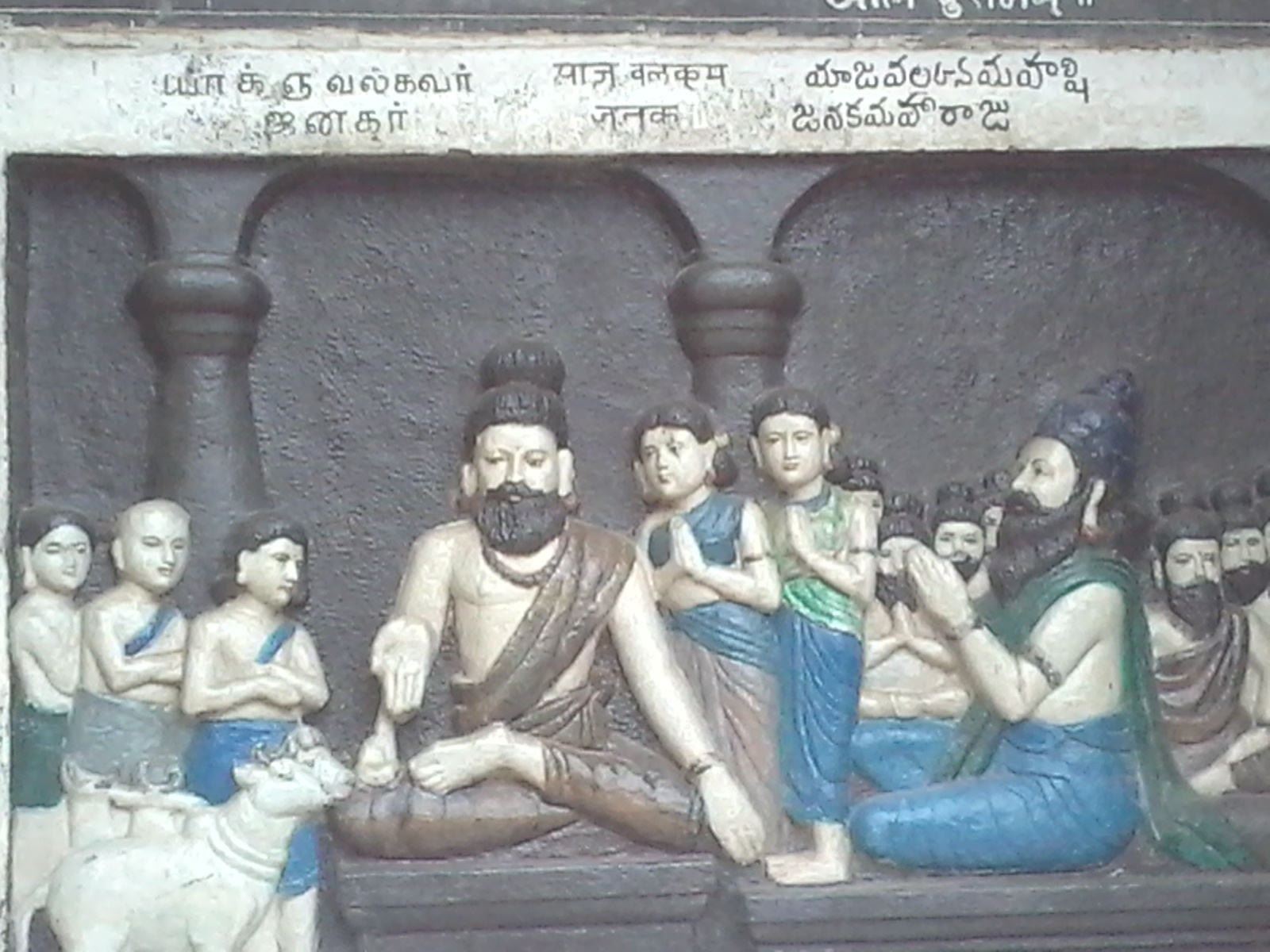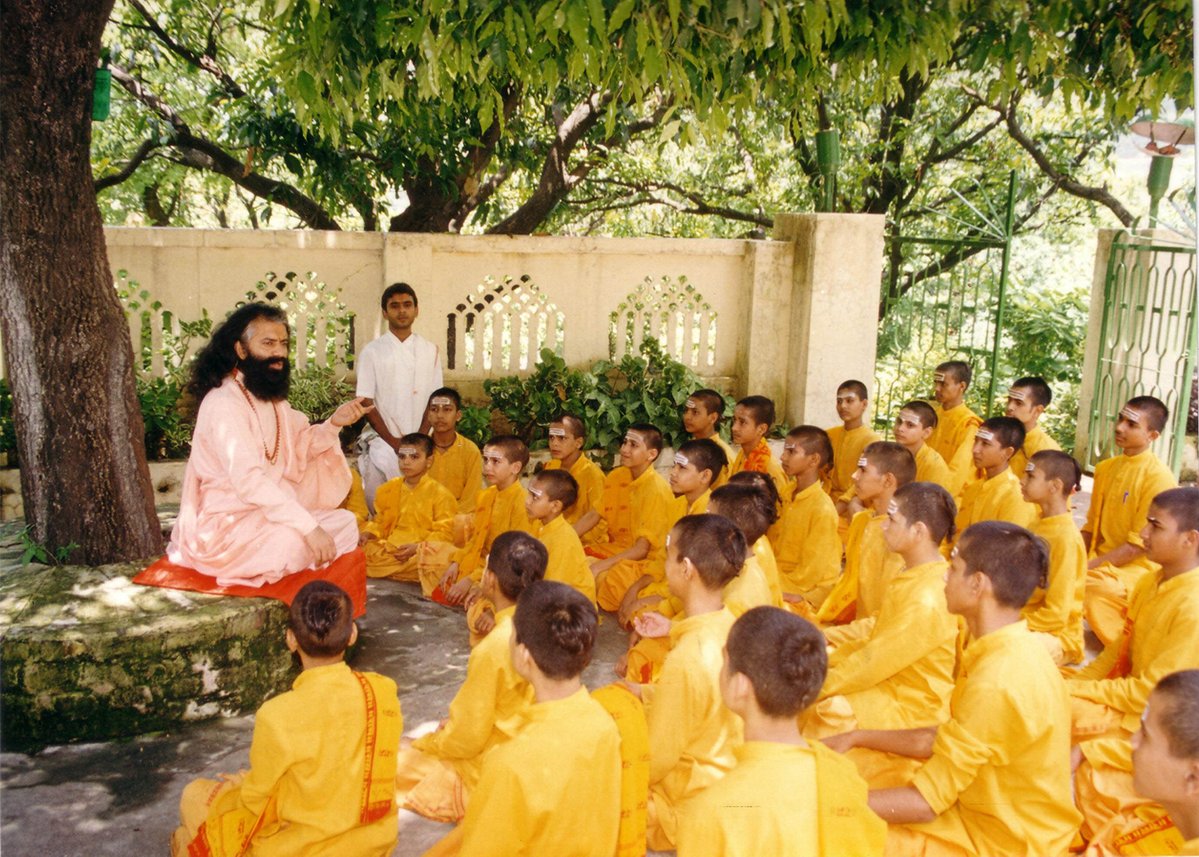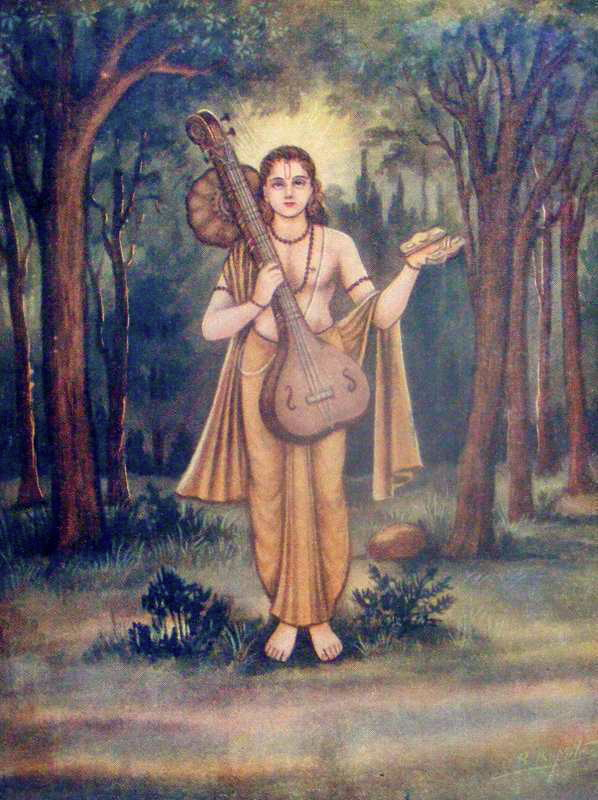|
Sanskrit And Vedic Learning In Mithila
Sanskrit and Vedic learning, also called Vedic studies, started in Mithila with the expansion of Vedic and Brahmanic culture eastwards along the Ganges plain. From the 12th/13th to 15th century CE, Mithila was an important centre of Nyaya Shastra and logical sciences. Nomenclature Some scholars have used the term "university" to describe the tradition of Sanskrit and Vedic learning in Mithila. History The Ramayana refers to the court of King Janaka in Mithila, attracting scholars and philosophers. In the text Brihadaranyaka Upanishad, there is reference of the famous scholarly Yajna known as Bahudakshina Yajna, in which Brahmin scholars from different parts of the Indian subcontinent participated for Shastrartha at the court of King Janaka. During the Gupta period Mithila was a center for disputes between Buddhists, Jains and Brahmins, with prominent Mimamsa authors writing defenses of Vedic ritual. Education took place through "Tols, Pathshāla and Chatušpathi or Chau ... [...More Info...] [...Related Items...] OR: [Wikipedia] [Google] [Baidu] |
Sanskrit And Vedic Learning
Sanskrit learning, also called Brahminic learning, Sanskrit education, and Sanskrit culture, is the traditional study and transmission of Indian religious and secular knowledge preserved in Sanskrit texts. Vedic learning is specifically the tradition of oral transmission and learning by heart of the Vedic period, Vedic mantras as preserved in the Vedas and the post-Vedic smriti and shastra, and auxiliary traditions (''vedanga'') which concern the proper understanding and interpretation of Sanskrit, and the proper execution of the Vedic rituals. Etymology and context "Sanskrit learning" is a broad category, referring to the study and transmission of religious and secular knowledge preserved in Sanskrit texts. "Vedic learning" concerns the correct recitation, and the understanding of their sacred meaning, of the Vedas, Vedic mantras, liturgical hymns of the Vedic people. These were composed in the early Vedic period (ca. 1500–900 BCE) by the Vedic people, and expanded with a va ... [...More Info...] [...Related Items...] OR: [Wikipedia] [Google] [Baidu] |
Gurukula
A () is a traditional system of religious education in India with ('students' or 'disciples') living near or with the guru in the same house for a period of time where they learn and get educated by their guruji. Etymology The word is a combination of the Sanskrit words ('teacher' or 'master') and ('family' or 'home'). The term is also used today to refer to residential monasteries or schools operated by modern gurus. History Ancient times The system of education has been in existence since ancient times. The Upanishads (1000-800 BCE) mention multiple , including that of guru Drona at Gurgaon. The (a discourse on the Brahman) is said to have taken place in Guru Varuni's . The vedic school of thought prescribes the (sacred rite of passage) to all individuals before the age of 8 at least by 12. From initiation until the age of 25 all individuals are prescribed to be students and to remain unmarried, a celibates. were supported by public donations. This was fo ... [...More Info...] [...Related Items...] OR: [Wikipedia] [Google] [Baidu] |
Samastipur District
Samastipur is one of the thirty-eight districts of Bihar in India. The district headquarters are located at Samastipur. The district occupies an area of 2904km² and has a population of 4,261,566. Samastipur was the largest milk producing district of Bihar in 2022. History Samastipur became a district in 1972 when it was split from Darbhanga district. Samastipur consists of four sub-divisions: # Rosera # Samastipur # Dalsinghsarai # Shahpur Patori Historically, the Samastipur district has been dominated by Koeri, Yadav and Dusadh castes. There is also a sizeable presence of Bhumihars in some of the regions, but they wield less political influence, as they are not united politically. For this reason, most of the total ten assembly constituencies falling in this district has been dominated by Koeris. The two Lok Sabha constituencies, which are part of this district are also dominated by Koeris and Dusadhs. It has been recorded that in this district, the Koeri and Bhumihar ... [...More Info...] [...Related Items...] OR: [Wikipedia] [Google] [Baidu] |
Udayanacharya Dih
Udayanacharya Dih is the site related to the Indian philosopher Udayana. The place is located at Kariyan village of Samastipur district in Mithila region of Bihar. There are ruins of Udayanacharya Dih. Udayana wrote his famous treatise Nyayakusumanjali at this place. Udayanacharya defeated the Buddhists scholars many times in debates during 10th century. Description The birthplace of the Indian philosopher Udayanacharya is at Karian village of Shivajinagar Block in Samastipur district of the Mithila region Mithila (), also known as Tirhut, Tirabhukti and Mithilanchal, is a geographical and cultural region of the Indian subcontinent bounded by the Mahananda River in the east, the Ganges in the south, the Gandaki River in the west and by the foothil .... His birth place at the village is called as Udayanacharya Dih or ''Udayan Dih''. According to legends it is said that the soil here is believed as a mixture of knowledge and wisdom. It is considered as holy soil. In the vill ... [...More Info...] [...Related Items...] OR: [Wikipedia] [Google] [Baidu] |
Vaisheshika
Vaisheshika (IAST: Vaiśeṣika; ; ) is one of the six schools of Hindu philosophy from ancient India. In its early stages, Vaiśeṣika was an independent philosophy with its own metaphysics, epistemology, logic, ethics, and soteriology. Over time, the Vaiśeṣika system became similar in its philosophical procedures, ethical conclusions and soteriology to the Nyāya school of Hinduism, but retained its difference in epistemology and metaphysics. The epistemology of the Vaiśeṣika school of Hinduism, like Buddhism, accepted only two reliable means to knowledge: direct observation and inference.DPS Bhawuk (2011), Spirituality and Indian Psychology (Editor: Anthony J.Marsella), Springer, , page 172* Eliot Deutsch (2000), in Philosophy of Religion : Indian Philosophy Vol 4 (Editor: Roy Perrett), Routledge, , pages 245-248; * John A. Grimes, A Concise Dictionary of Indian Philosophy: Sanskrit Terms Defined in English, State University of New York Press, , page 238 The Vaiśeṣ ... [...More Info...] [...Related Items...] OR: [Wikipedia] [Google] [Baidu] |
Nyayakusumanjali
Nyayakusumanjali (''A Handful of Flowers of Logic'') is a treatise in Sanskrit composed by 10th century CE Indian logician and philosopher Udayana. The work has been described as codification of the Hindu arguments for the existence of God. It has been noted that this treatise is the most elaborate and the most fundamental work of the Nyaya-Vaiseshika school on the Isvara doctrine. An outline of Nyaya-kusumanjali In Indian philosophical writings a ''prakarana'' refers to a genre of work that may be considered as roughly equivalent to the Western concept of a monograph. Nyayakusumanjali is a treatise belonging to this genre. Since the work consists of verses (known as ''karika''s) interspersed with prose, it can be considered as a work of the genre Misra-prakarana (meaning "mixed-''prakarana''"). There are seventy-three verses in Nyayakusumanjali. These verses are distributed unevenly in five chapters (called ''Stabaka''s, that is, "cluster of blossoms" or "bunch of flowers"). ... [...More Info...] [...Related Items...] OR: [Wikipedia] [Google] [Baidu] |
Udayana
Udayana, (Devanagari: उदयन) also known as Udayanācārya (Udyanacharya, or Master Udayana), (circa 975 - 1050 CE) was an Indian philosopher and logician of the tenth century of the Nyaya school who attempted to devise a rational theology to prove the existence of God using logic and counter the attack on the existence of God at the hands of Buddhist philosophers such as Dharmakīrti, Jñānaśrī and against the Indian school of materialism (Chārvaka). He is considered to be the most important philosopher of the Nyāya tradition. He worked to reconcile the views held by the two major schools of logic (Nyaya and Vaisheshika). This became the root of the Navya-Nyāya ("New Nyāya") school of the thirteenth century, established by the Gangesha Upadhyaya school of "right" reasoning, which is still recognized and followed in some regions of India today. He lived in Kariyan village in Mithila, near present-day Darbhanga, Bihar state, India. Udayana wrote a sub-gloss on ... [...More Info...] [...Related Items...] OR: [Wikipedia] [Google] [Baidu] |
Madhubani District
Madhubani district is one of the thirty-eight districts of Bihar, India, and is a part of Darbhanga division. Its administrative headquarters are located in Madhubani. The district has an area of and has a population of 4,487,379 (as of 2011). Madhubani is the largest fish-producing district of Bihar in 2022. History Madhubani became a district in 1972 when it was split from Darbhanga district. It is believed that Baliraajgadh, an archaeological site which lies in modern-day Madhubani district was the capital of the ancient Mithila Kingdom. In 2019 a Meteorite fell at a farm in village which was named scholars as Mahadeva Meteorite of the Madhubani district in India. Culture Madhubani art or Mithila painting was traditionally created by the women of various communities in Mithila region of India and Nepal. It originated from Madhubani district of Mithila region of Bihar, and, it is popularly called Mithila painting or Madhubani art. Madhubani is also a major expor ... [...More Info...] [...Related Items...] OR: [Wikipedia] [Google] [Baidu] |
Vachaspati Mishra Dih
Vachaspati Mishra Dih ( Maithili: ''वाचस्पति मिश्र डीह'' ) is a historical site and the birthplace of the Indian philosopher Vachaspati Mishra at ''Thadi'' village of Madhubani district in the Mithila region of Bihar, India. Background Vachaspati Mishra was an Indian philosopher and commentator of the six schools of Indian Philosophy during 9th-10th century. His commentary is known as ''Bhamati''. He wrote eight books including the world famous Bhamati commentary on Nyaya Vedanta, Sankhya, Yoga and Mimansa. His main treatise is '' Tattavabindu''. He was born in Thadi village of Andhratharhi block in Madhubani district of the Mithila region in Bihar, India. Story of his commentary 'Bhamati' According to legend, it is said that he was married in his childhood. After completing his studies he came to home and asked permission with his mother to write commentary on the Indian philosophy. After that he became absorbed in writing the commentary a ... [...More Info...] [...Related Items...] OR: [Wikipedia] [Google] [Baidu] |
Vāchaspati Misra
Vachaspati Mishra (IAST: Vācaspati Miśra), was a ninth or tenth century Indian Hindu philosopher of the Advaita Vedanta tradition, who wrote bhashya (commentaries) on key texts of almost every 9th-century school of Hindu philosophy. and harmonised Shankara's thought with that of Mandana Miśra, who until the 10th century was the most authoritative exponent of Advaita Vedanta. He also wrote an independent treatise on grammar, '' Tattvabindu,'' or ''Drop of Truth'', which focuses on Mīmāṃsā theories of sentence meaning. Biography Vāchaspati Misra was born into a Maithil Brahmin family in Andhra Tharhi, Madhubani, Bihar. Little is known about Vāchaspati Miśra's life, and the earliest text that has been dated with certainty is from 840 CE, and he was at least one generation younger than Adi Śaṅkara. However, an alternate date for the same text may be 976 CE, according to some scholars; a confusion that is based on whether Hindu Śaka or Vikrama era calendar is us ... [...More Info...] [...Related Items...] OR: [Wikipedia] [Google] [Baidu] |
Naiyayika
Naiyayika (Sanskrit: नैयायिक , Romanised: ''Naiyāyika'') is referred to a follower of the Nyāya school of the Indian philosophy founded by the Vedic sage ''Akshapada Gautama''. Its plural form is ''Naiyayikas''. The scholar who study and specialises in the field of Nyaya Shastra is known as Naiyayika. The Naiyayikas are also called as logicians. The main occupations of the Naiyayikas are the investigations of the truth and acquiring correct knowledge through the process of logical reasonings. They accept the validity of the authority of the Vedas. They harmonise their own independent thoughts and concepts with that of the Vedas. According to Naiyayikas, there are sixteen categories to attain the perfection of correct knowledges. These sixteen categories are ''pramāṇa, prameya, saṃśaya, prayojana, dṛṣṭānta, siddhānta, avayava, tarka, nirnaya, vāda, jalpa, vitaṇḍā, hetvābhāsa, chhala, jāti, nigrahasthāna''. The Naiyayikas consider four typ ... [...More Info...] [...Related Items...] OR: [Wikipedia] [Google] [Baidu] |


